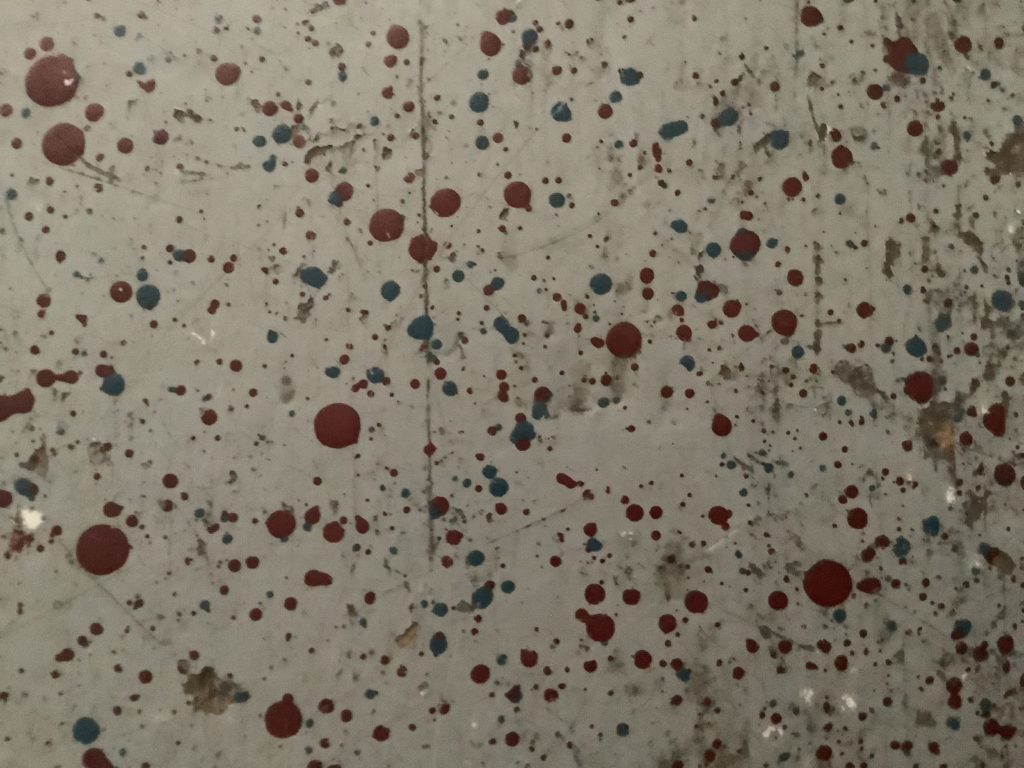Abstract art or frugal flooring?
Posted on August 23, 2022 by Jenny ONeill
Explaining the spatter-painted floors of the Handy House.
Many visitors to the Handy House ask about the spatter-painted wood floors. Showcasing a variety of colors — ochre, grey, dark blue, brown, and mustard yellow — the floors are reminiscent of Jackson Pollock-style abstract art. For those with imagination, some floors could almost be images of planets and stars scattered in a far off galaxy.

Spatter painted floor at the Handy House, Westport MA
Spatter-painted floors are quite common in 19th century farmhouses of Cape Cod and the Southcoast region of Massachusetts. The origins of the decorative technique are shrouded in mystery, but there are similarities to the 19th century technique of floor stenciling.
By 1850, geometrically precise formations of stencils had transformed into more random spatter patterns, inspired perhaps by enamel kitchenware known as speckleware. The technique had many practical advantages: providing camouflage for dirt, inexpensive and easy to clean. It is especially well-suited to rural homesteads and managing the annual cycles of tracking in mud, snow, ice or sand. It is also well suited to the Yankee sensibility: a do-it-yourself /make-do mentality, as it required little skill, providing a way to use up left-over paint and promoting the efficient use of supplies that was far cheaper than carpet or rugs.
The technique became popular in the Colonial Revival period of the early 20th century. The process is outlined in The Complete Book of Interior Decorating, 1948:
To spatter a floor, a brush is held in one hand and struck sharply against a stick or piece of iron pipe. Black and white are good spatter colors because they contrast well with most color schemes. To make spatters small, hold the stick about a foot from the floor and use less paint on the brush. To make them larger, hold the stick three feet from the floor with more paint on the brush.
Comparisons to Jackson Pollock are not so far-fetched as he worked with house paint which he splashed over horizontal canvases. In fact, at the same time as Pollock created his abstract masterpieces in the 1940s, Eleanor Tripp, owner of the Handy House, was busy spatter-painting the expansive canvas provided by the floors of her home.
The Handy House is located at 202 Hix Bridge Road, Westport MA. It is open seasonally, visit www.wpthistory.org for more information.
